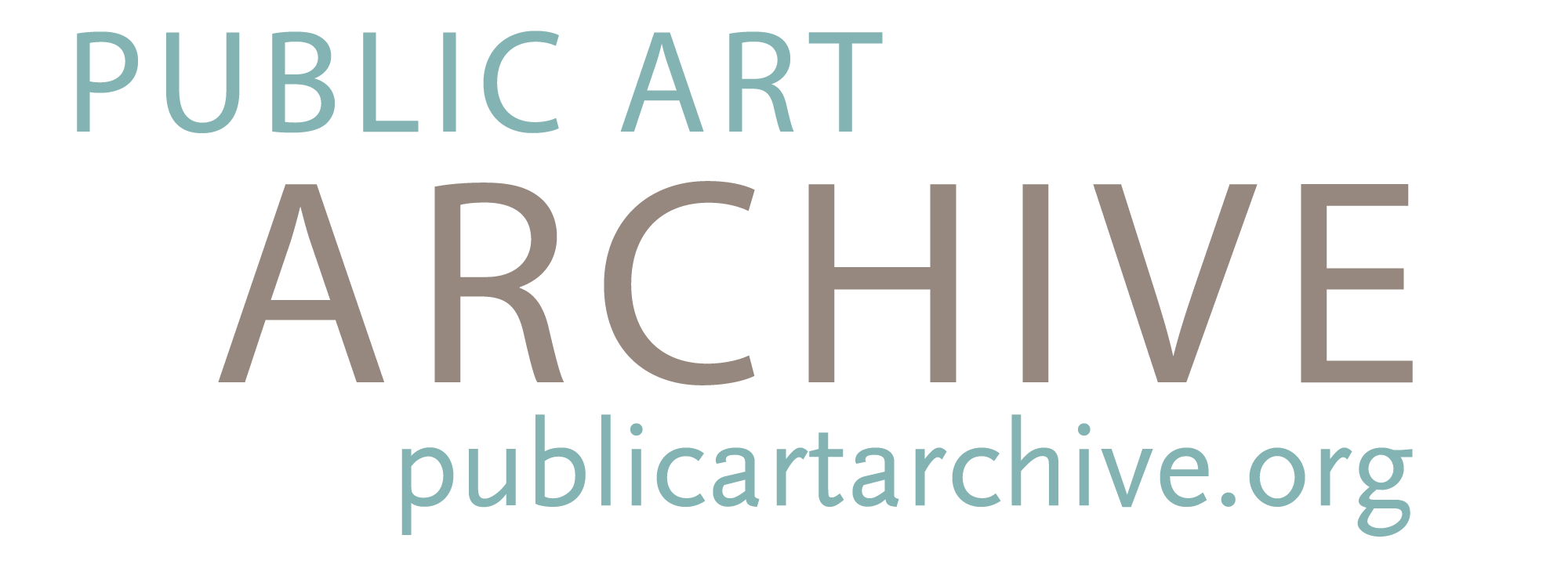Written by: Elysian Koglmeier on behalf of the Public Art Archive
Are you a public art administrator, artist, or community member seeking information about public art? Have questions about contracts? Need to educate a panel that is unfamiliar with public art? Well you’re in luck! Here’s a handful of resources to inform you and your constituents about public art projects, processes, trends and challenges.
Note: This list is by no means exhaustive. There are many wonderful resources available to the public art field, and more in the works. The Public Art Archive will continue to post helpful aids.
I. ONLINE NETWORKS & WEBSITES
Forecast Public Art

Forecast Public Art, a nonprofit that connects artists to the needs and opportunities of communities, created a Public Art Toolkit, available field wide at no cost. The Toolkit includes:
- Tools that outline the process of creating public art including fabrication, artist selection, and conservation.
- Articles that explore the ideas of public art
- Glossary of public art terms
- Gallery of public art images, videos and case studies
- List of regional resources, grants and public art programs
Forecast Public Art also publishes the Public Art Review, which is covered in Section III below. You can subscribe here.
Forecast is collaborating with WESTAF on its 2017 Symposium, The Future History of Public Art. Learn more about the Symposium.
Artpreneur
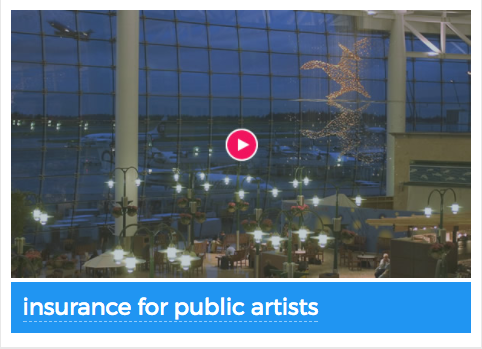
Artpreneur was created by the Arts & Business Council to help artists achieve success by giving them the tools and resources focused on the “business side” of art. The site has a Public Art section with webinars and videos on topics like insurance, the RFQ/RFP process, working with foundries, and legal issues related to the field.
Americans for the Arts’ Public Art Network: PARC Resource Center

Americans for the Arts Public Art Network (PAN) advances public art programs and projects through advocacy, policy, and informational resources. PAN’s newest offering is the Public Art Resource Center – an online portal with information and tools tailored for artists, administrators, community stakeholders and field partners. You’ll find articles covering most aspects of the public art process including topics surrounding community engagement, evaluation, and contractual agreements. Watch educational webinars targeting specific areas of the field, like the segment that featured Arts in Transit & Transportation Projects. Review best practices on the ARTSBlog and join other public art professionals at the Annual Public Art & Placemaking Preconference.
CaFÉ

CaFÉ (CallForEntry.org), is the leading online application and adjudication system for managing calls for entry. CaFÉ allows call administrators to streamline the application and review process online. Public artists have access to a comprehensive list of public art RFQs, fellowships, residencies, mini grants and more. Artists can quickly and easily apply to calls on CaFÉ – leaving more time for the rewarding creative making process!
And of course, Public Art Archive (PAA)!
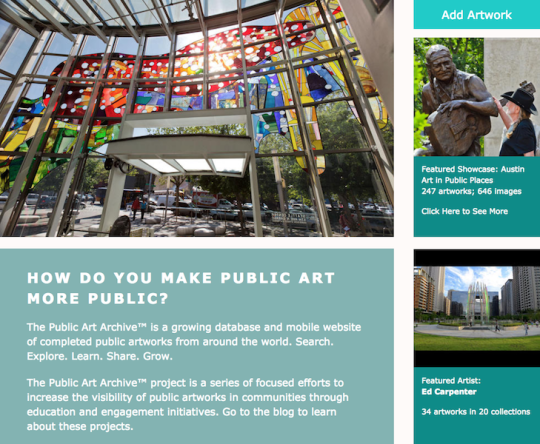
The Public Art Archive (PAA) is an online database of over 11,000 completed artworks representing over 1,000 collections. PAA strengthens the public art community by showcasing international works that are uploaded, for free, by public art managers and artists. PAA serves as an educational tool for artists, administrators and the public. Panel administrators can use the Archive to find and showcase relevant works. Interested viewers can easily find and explore your works and collections with PAA’s Google Maps feature. Additionally, you don’t have to waste thousands of dollars building a separate suite of sites to publicize your collection; harness the thousands of searches made on PAA every month.
II. BOOKS & ESSAYS
The Everyday Practice of Public Art: Art, Space and Social Inclusion, Edited by Cameron Cartiere and Martin Zebracki
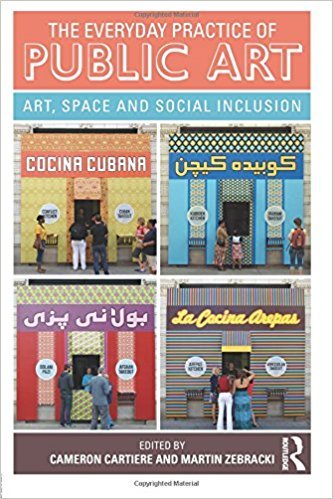
What does contemporary public art look like today and where is the transformative field going? The Everyday Practice of Public Art is a collection of essays with new and multidisciplinary voices and views of public art. Topics include constructing new models for developing and commissioning temporary and performance-based public artworks, the social inclusiveness of public art, and radical developments in the field.
Cameron Cartiere will be the moderator and a presenter at the 2017 WESTAF Symposium – The Future History of Public Art. Learn more about the Symposium and other presenters.
Public Art: An Essential Component of Creating Communities by Jack Becker
Becker gives an overview of public art for those new to the field. He poses 3 questions and expounds upon each with findings from the first Public Art Network survey in 2003. The questions are:
- What constitutes the public art field today?
- Why is public art beneficial to a community?
- What are the critical issues in the field?
Becker speaks to the multifaceted nature of public art and the challenges that ensue from such a diverse field. But, he concludes with the vital importance public art plays in our society:
“These landmarks and special events enhance our experience a place and our quality of life. They engender a sense of pride and community identity. They reach audiences outside museums, galleries, and theaters, and they add to the beauty of everyday life. They declare the worth of a place and a time in our shared culture.”
*Tip: You can find more public art monographs on the Americans for the Arts’ Publications page.
Jack Becker will be the lead respondent and a presenter at the 2017 WESTAF Symposium – The Future History of Public Art. Learn more about the Symposium and other presenters.
Public Art By the Book, Edited by Barbara Goldstein

Goldstein shares a comprehensive guide for arts professionals and volunteers creating public art in their communities. It’s a helpful resource for those jumping into their first public art project. She gives an overview of public art projects and programs including chapters on master planning, artist contracts, conservation, education, copyright, the Visual Artist’s Rights Act of 1990 (VARA), and more.
III. JOURNALS
Public Art Review

Public Art Review, established in 1989 by Forecast Public Art, is the only magazine in the United States dedicated to public art. Each publication centers around a theme and recent issues have focused on MacArthur-winning public artists, public art funding, and the creation of a more livable future through public art. You can subscribe here.
Public Art Dialogue
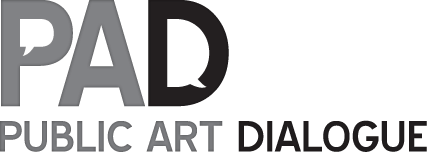
Public Art Dialogue (PAD), an organization devoted to the premise that dialogue is the essential element in all effective public art endeavors, publishes a scholarly journal Public Art Dialogue twice a year. The most recent issue focused on college campuses. Submissions are welcomed from the diverse disciplines of public art – public art scholars, artists, architects, and critics to name a few. PAD is currently seeking papers and artists’ projects: submit here.
